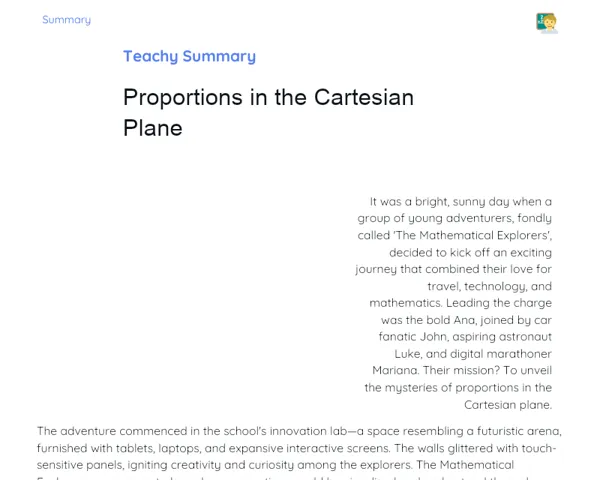Summary Tradisional | Operations: Addition and Subtraction
Contextualization
Addition and subtraction are the building blocks of mathematics and play a crucial role in our everyday lives. Whether it's tallying up expenses at the local shop or figuring out how far we've traveled, these operations are essential tools we utilize regularly, often without even thinking about it. Grasping how these operations work not only helps us with day-to-day tasks but also lays the groundwork for more complex mathematical concepts we will delve into as we advance in our studies.
These operations have been part of human history for centuries, with evidence of their use by ancient cultures like the Babylonians and Egyptians, going back to around 2000 BC. These communities applied these mathematical operations to solve issues related to trade, construction, and navigation. Acknowledging the historical significance of addition and subtraction underlines their usefulness, reminding us that mathematics is a timeless and essential discipline in nurturing human progress.
To Remember!
Definition of Addition and Subtraction
Addition is the operation of bringing together two or more numbers to arrive at a total. It’s a primary aspect of arithmetic represented by the plus sign (+). We encounter addition in everyday life, such as when shopping, measuring distances, or adding up scores in games.
On the flip side, subtraction involves taking one number away from another to determine the difference. Denoted by the minus sign (-), this operation is equally crucial, whether it's for calculating change after a purchase, checking how much is left of an item, or comparing quantities.
Both operations serve as a foundation for addressing practical problems and are vital for understanding more advanced mathematical functions. A firm grasp of addition and subtraction is necessary for progress in mathematics since they frequently appear in algebra, calculus, and other higher-level subjects.
-
Addition combines numbers to derive a total.
-
Subtraction reduces one number from another to find the difference.
-
These operations are crucial for solving both practical and advanced mathematical problems.
Parts of Addition
In addition, the numbers being combined are termed addends. Each addend contributes to the total reached at the end of the calculation. For instance, in the equation 7 + 5 = 12, both 7 and 5 serve as the addends, while 12 is the total or sum.
Understanding how addition is structured is key to solving problems accurately. Identifying the addends allows us to organize data and apply the operation correctly. Moreover, breaking down numbers into smaller addends can ease mental calculations and assist in tackling more complex problems.
Addition is a commutative operation, which means that the order of the addends does not affect the final result. For example, 3 + 4 is the same as 4 + 3. This property is handy in problem-solving, offering flexibility in manipulating numbers.
-
Addends are the numbers involved in the addition process.
-
The total or sum is what results from adding the addends.
-
Addition is commutative: changing the order of addends does not affect the outcome.
Parts of Subtraction
In subtraction, the components differ from those in addition. The number from which another is subtracted is known as the minuend. The number being taken away is the subtrahend, and the outcome of the subtraction is the difference. For example, in the equation 10 - 4 = 6, 10 is the minuend, 4 is the subtrahend, and 6 is the difference.
Grasping the mechanics of subtraction is essential for accurate problem-solving. Correctly identifying the minuend and subtrahend helps prevent common errors, such as mixing up the numbers and leading to incorrect answers. The ability to decompose numbers into smaller segments is similarly beneficial in subtraction, especially during mental math or tackling more intricate problems.
Unlike addition, subtraction is not commutative, meaning the order of the numbers is crucial. For instance, 5 - 3 is not the same as 3 - 5. Furthermore, subtraction is also not associative, which means that the way numbers are grouped will change the result.
-
Minuend is the number from which something is subtracted.
-
Subtrahend is the number that is taken away.
-
The difference or remainder is the result of subtraction.
-
Subtraction is neither commutative nor associative.
Properties of Addition and Subtraction
Addition possesses two major properties: commutativity and associativity. The commutative property states that the order of the addends does not alter the outcome of the sum. For instance, 3 + 4 equals 4 + 3. This flexibility aids in problem-solving by allowing rearrangement of the addends for easier calculation.
The associative property dictates that the grouping of addends does not impact the result. For example, (2 + 3) + 4 is the same as 2 + (3 + 4). This property is beneficial when simplifying calculations with several addends and enables more efficient problem-solving.
Subtraction, conversely, does not share these properties. The sequence of numbers in subtraction is significant, as seen with the difference between 5 - 3 and 3 - 5. Additionally, how the numbers are grouped also influences the outcome, since (8 - 3) - 2 differs from 8 - (3 - 2). Recognizing these distinctions is fundamental for appropriately applying addition and subtraction operations across different mathematical scenarios.
-
Addition is commutative: rearranging the order of addends does not affect the result.
-
Addition is associative: changing the grouping of addends does not alter the result.
-
Subtraction is not commutative: the sequence of numbers is crucial.
-
Subtraction is not associative: the manner in which numbers are grouped impacts the outcome.
Key Terms
-
Addition: The operation of combining two or more numbers to get a total.
-
Subtraction: The process of deducting one number from another to determine the difference.
-
Addends: The numbers that are summed in addition.
-
Total: The result when the addends are added.
-
Minuend: The number from which another number is subtracted.
-
Subtrahend: The number that is taken away.
-
Difference or Remainder: The result of a subtraction.
-
Commutativity: A property indicating that the order of addends can be changed without affecting the sum.
-
Associativity: A property stating that the arrangement of addends can be altered without changing the result.
Important Conclusions
Addition and subtraction are not just theoretical concepts; they are vital tools we apply in our everyday lives—from shopping and calculating distances to dividing bills. Mastering these operations smoothens our daily routines and paves the way for more advanced mathematical ideas we'll tackle in the upcoming lessons.
Throughout our discussions, we've examined the key components of addition and subtraction, identifying addends, totals, minuends, subtrahends, and differences. We've also taken a closer look at the properties of addition, such as commutativity and associativity, while noting that subtraction lacks these features. This highlights the significance of the order and grouping of numbers in mathematical problems.
Understanding these concepts is not only essential for solving practical problems but also for developing advanced mathematical proficiency. I encourage everyone to further explore this topic and practice addition and subtraction in various real-life scenarios, thus solidifying your grasp and proficient use of these operations.
Study Tips
-
Consistently practice solving addition and subtraction problems to reinforce your understanding and attain fluency.
-
Go over the examples discussed in class and try to create new problem sets based on everyday situations to apply what you've learned.
-
Utilize additional resources, such as textbooks and online exercises, to broaden your knowledge and discover varied methods for carrying out addition and subtraction operations.


